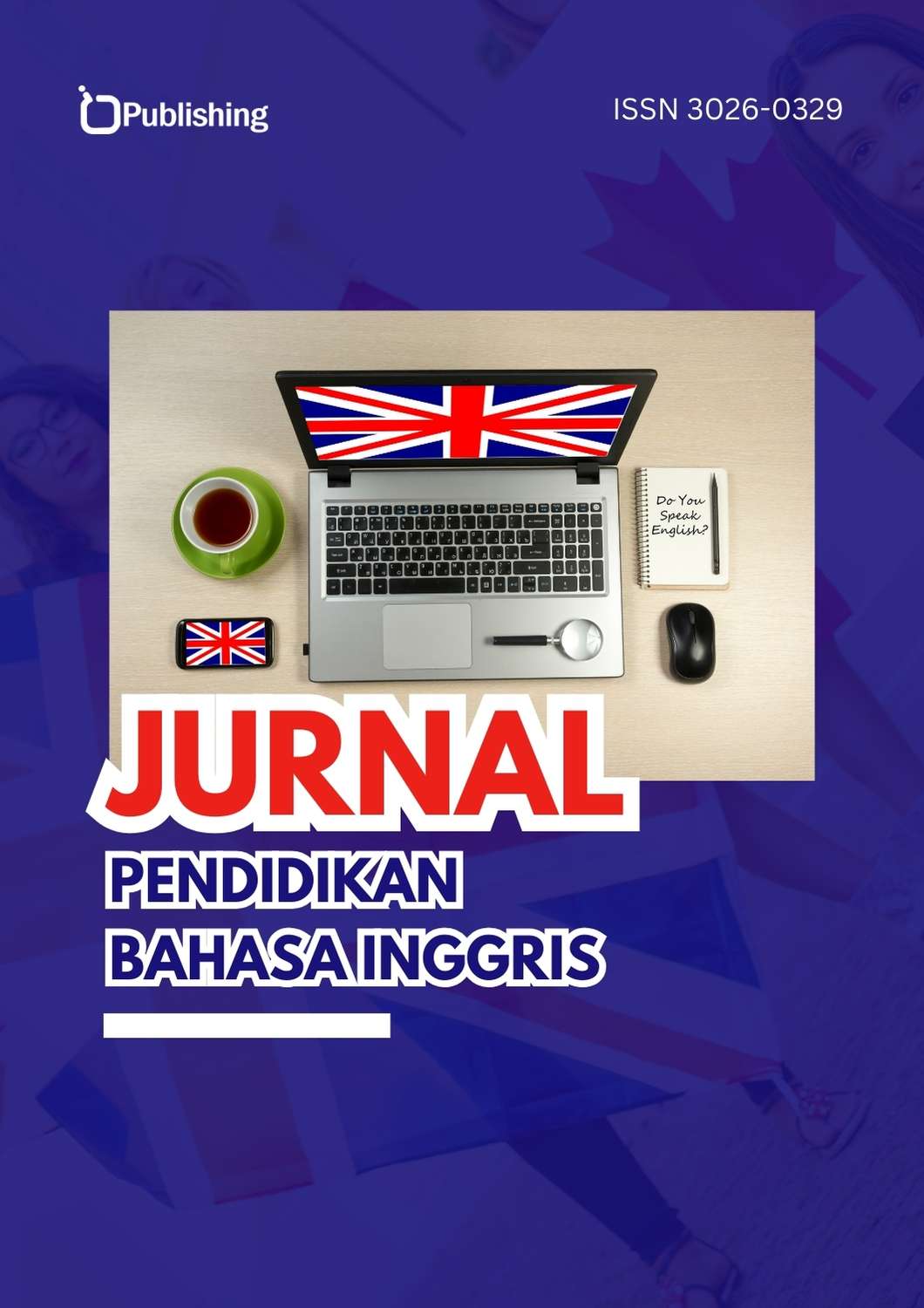Navigating Cultural and Contextual Complexities in Translating Uzbek Neologisms into English
DOI:
https://doi.org/10.47134/jpbi.v2i4.1886Keywords:
Neologisms, Uzbek Language, English Translation, Cultural Adaptation, Translation Strategies, Corpus Linguistics, Social Media, Lexicographic Approaches, Globalization, Contextual FactorsAbstract
This study explores the translation of Uzbek neologisms into English, focusing on the influence of cultural and contextual factors. The analysis highlights how cultural differences, domain-specific characteristics, and the impact of social media shape translation strategies and semantic accuracy. Using corpus linguistics methods, the study examines neologisms across various sectors, including technology (80% translated via calquing or direct translation), economics (70% calquing), culture (60% descriptive translation), and social media (70% transliteration). Examples such as “xalqona” (folk-style/traditional Uzbek-style) and “xesh” (hashtag) illustrate the challenges of preserving cultural nuances and standardizing informal terms. Corpus analysis reveals that 40% of neologisms are included in Uzbek explanatory dictionaries, while only 30% have equivalents in Uzbek-English translation dictionaries, with 70% of social media neologisms absent. The findings propose corpus-based approaches and standardized equivalents to enhance dictionary coverage and optimize translation processes, contributing to the fields of linguistics and translation studies
References
Aczél, P. (2018). Social futuring - A discursive-conceptual framework. Society and Economy, 40, 47-75, ISSN 1588-9726, https://doi.org/10.1556/204.2018.40.S1.4
Asif, M. (2021). Linguistic analysis of neologism related to coronavirus (COVID-19). Social Sciences and Humanities Open, 4(1), ISSN 2590-2911, https://doi.org/10.1016/j.ssaho.2021.100201
Blake, J. (2017). From traditional culture and folklore to intangible cultural heritage: Evolution of a treaty. Santander Art and Culture Law Review, 3(2), 41-60, ISSN 2391-7997, https://doi.org/10.4467/2450050XSNR.17.017.8422
Cao, X. (2021). Bullet Screens (Danmu): Texting, Online Streaming, and the Spectacle of Social Inequality on Chinese Social Networks. Theory Culture and Society, 38(3), 29-49, ISSN 0263-2764, https://doi.org/10.1177/0263276419877675
Cierpich-Kozieł, A. (2020). Corona reality – about new polish compound words with the stem korona-in the time of pandemic. Jezyk Polski, 100(4), 102-117, ISSN 0021-6941, https://doi.org/10.31286/JP.100.4.7
Ergashev T.T., Ingliz va o‘zbek tilidagi neologizmlarning semantik xususiyatlari. ATMU Respublika ilmiy-amaliy anjumani. Qarshi 2025, 2025-yil.
Ergashev T.T., Ingliz va o‘zbek tillaridagi neologizmlarni qiyosiy tipologik tahlili. The Lingua Spectrum Journal, Volume: 4. April 2025, 2025-yil.
Ergashev T.T., Localization of neologisms in the uzbek language - adoption and national characteristics of neologisms in the technological field. UZDJTU Xalqaro konferensiya, 2025-yil 29-aprel. Xalqaro ilmiy-amaliy anjuman 2025-yil 29-aprel, 2025-yil.
Facchinelli, F. (2020). Unburnable and unleakable carbon in Western Amazon: Using VIIRS nightfire data to map gas flaring and policy compliance in the Yasuni biosphere reserve. Sustainability Switzerland, 12(1), 1-26, ISSN 2071-1050, https://doi.org/10.3390/SU12010058
Farrell, T. (2020). On the use of Jargon and Word Embeddings to Explore Subculture within the Reddit's Manosphere. Websci 2020 Proceedings of the 12th ACM Conference on Web Science, 221-230, https://doi.org/10.1145/3394231.3397912
Fuglinszky, Á. (2020). Language-bound terms—term-bound languages: the difficulties of translating a national civil code into a lingua franca. International Journal for the Semiotics of Law, 33(3), 749-770, ISSN 0952-8059, https://doi.org/10.1007/s11196-020-09704-x
Ibragimov J.Y., Formal tilshunoslikda so‘zlar birikuvi masalalarining o‘rganilishi. O‘zbekiston milliy axborot agentligi – O‘ZA elektron jurnal, 2022. 10-son. – B. 108-112.
Ibragimov J.Y., Jahon tilshunosligida collocation atamasi va uning tadqiqi. FarDU. Ilmiy xabarlar. Farg‘ona davlat universiteti ilmiy jurnali, 2022. 4-son. – B. 123-126.
Landwehr, A. (2018). Nostalgia and the turbulence of times. History and Theory, 57(2), 251-268, ISSN 0018-2656, https://doi.org/10.1111/hith.12060
Lomakina, O.V. (2019). Winged Words in a Modern Cultural Context. Rudn Journal of Language Studies Semiotics and Semantics, 10(2), 256-272, ISSN 2313-2299, https://doi.org/10.22363/2313-2299-2019-10-2-256-272
Macpherson, B. (2020). Baudrillard on Broadway: Bio-musicals, the hyperreal and the cultural politics of simuloquism. Journal of Interdisciplinary Voice Studies, 5(1), 43-57, ISSN 2057-0341, https://doi.org/10.1386/jivs_00015_1
Olko, J. (2019). An Animating Principle in Confrontation with Christianity? De(Re)Constructing the Nahua Soul. Ancient Mesoamerica, 30(1), 75-88, ISSN 0956-5361, https://doi.org/10.1017/S0956536118000329
Ruiz, C.A. Diaz (2020). Feral segmentation: How cultural intermediaries perform market segmentation in the wild. Marketing Theory, 20(4), 429-457, ISSN 1470-5931, https://doi.org/10.1177/1470593120920330
Saji, S. (2021). Comics in the time of a pan(Dem)ic: Covid-19, graphic medicine, and metaphors. Perspectives in Biology and Medicine, 64(1), 136-154, ISSN 0031-5982, https://doi.org/10.1353/pbm.2021.0010
Silberman, S. (2017). Neurodiversity rewires conventional thinking about brains. Beginning with Disability A Primer, 51-52, https://doi.org/10.4324/9781315453217-6
Swinehart, K. (2019). Decolonial time in Bolivia’s Pachakuti. Signs and Society, 7(1), 96-114, ISSN 2326-4489, https://doi.org/10.1086/701117
Temmerman, R. (2017). Verbalizing sensory experience for marketing success: The case of the wine descriptor minerality and the product name smoothie. Terminology, 23(1), 132-154, ISSN 0929-9971, https://doi.org/10.1075/term.23.1.06tem
Thurston, T. (2018). The Purist campaign as Metadiscursive Regime in China's Tibet. Inner Asia, 20(2), 199-218, ISSN 1464-8172, https://doi.org/10.1163/22105018-12340107
Waśniewska, M. (2020). The red pill, unicorns and white knights: Cultural symbolism and conceptual metaphor in the slang of online incel communities. Second Language Learning and Teaching, 65-82, ISSN 2193-7648, https://doi.org/10.1007/978-3-030-42734-4_4
Zheltukhina, M.R. (2019). Media Promotion Role of Economic Vocabulary: Specific Features and Functions in Presentation and Advertisement. Online Journal of Communication and Media Technologies, 9(2), ISSN 1986-3497, https://doi.org/10.29333/ojcmt/5733











